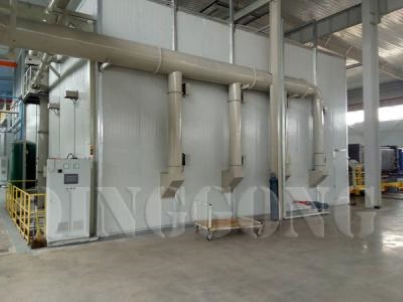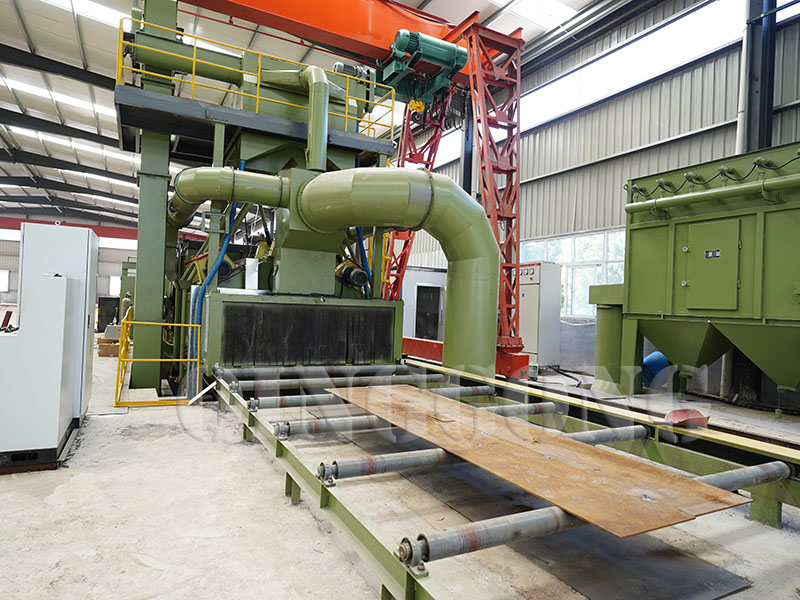In sandblasting, the abrasive beam should form a spray angle of 75-90° with the matrix surface, and the sandblasting operation should be carried out from one end to the other. The distance between the sandblasting nozzle and the matrix surface depends on the particle size and the type of abrasive, the size of nozzle diameter and the processing capacity of sandblasting machine, which is generally in the range of 100-300mm. In order to obtain the required sandblasting surface, the structure and uniformity of the sandblasted surface shall be visually inspected to determine the required sandblasting time. Too long sandblasting time can lead to undesirable surface structure.
In the process of sandblasting, the abrasives are shot out at a fairly high speed and hit the surface of the steel matrix. Of course, the speed will not be so high that the abrasive will be broken prematurely before the metal is properly cleaned. Under the high pressure of compressed air, the non-metallic abrasives will be excessively broken and lost, so the abrasive such as brown corundum should not be used at high pressure. In sandblasting construction, for soft or thin-walled matrix, low wind pressure and slightly fine sand should be used to reduce the possibility of sand embedding. For pressure-type professional sandblasting equipment, high wind pressure will produce great pressure stress, and high nozzle pressure will lead to the deformation of thin workpiece matrix, increase the crushing rate of abrasives easily and increase the loss of abrasive.
After sandblasting, the surface of steel matrix is clean and has high activity as well as the property of hygroscopic moisture. Therefore, the surface of steel components after sandblasting can never be touched by hand. If you need to touch and move them, wear clean gloves. The surface reaction ability of steel matrix which has just been sandblasted is very strong. If the ambient temperature rises and the temperature of the workpiece is lower than the ambient temperature, condensation and corrosion will occur on the surface of the workpiece. In the north of China, such a situation often occurs in anti-corrosive construction, especially in the construction of some storage tanks. In autumn, due to the large temperature difference between day and night, this situation will also happen during construction at night. When using pressure-type sandblasting, the long-term operation of the air compressor makes the temperature of the compressed air increase. When the temperature is higher than the compressed air of the workpiece, it is easy to condense water droplets on the workpiece interface, but this phenomenon can be avoided by using centrifugal sandblasting process.
After sandblasting, metallic coating should be sprayed on the surface of steel components as soon as possible. The shorter the interval between sandblasting and spraying, the higher the bonding strength of the coating. After sandblasting, due to the serious plastic deformation of the atomic layer on the surface of the steel matrix, the increase of lattice defects, and the increase of surface activity and adsorptivity, at this time, some dust, dirt and water are easily adsorbed on the surface of the steel matrix, and the corrosion is inclined to occur. The surface activity of the workpiece surface is significantly improved after sandblasting, and low-energy electrons can be emitted at room temperature. The measurement of low-energy electrons can quantitatively describe the activation degree of the surface. The results show that with the extension of the placement time, the energy and quantity of low-energy electrons on the surface of the matrix will gradually decrease, and the surface activity will also decline, which will affect the bonding strength of the hot spray coating.
 EN
EN
 fr
fr  de
de  es
es  it
it  ru
ru  pt
pt  ar
ar  th
th  pl
pl  ro
ro 


